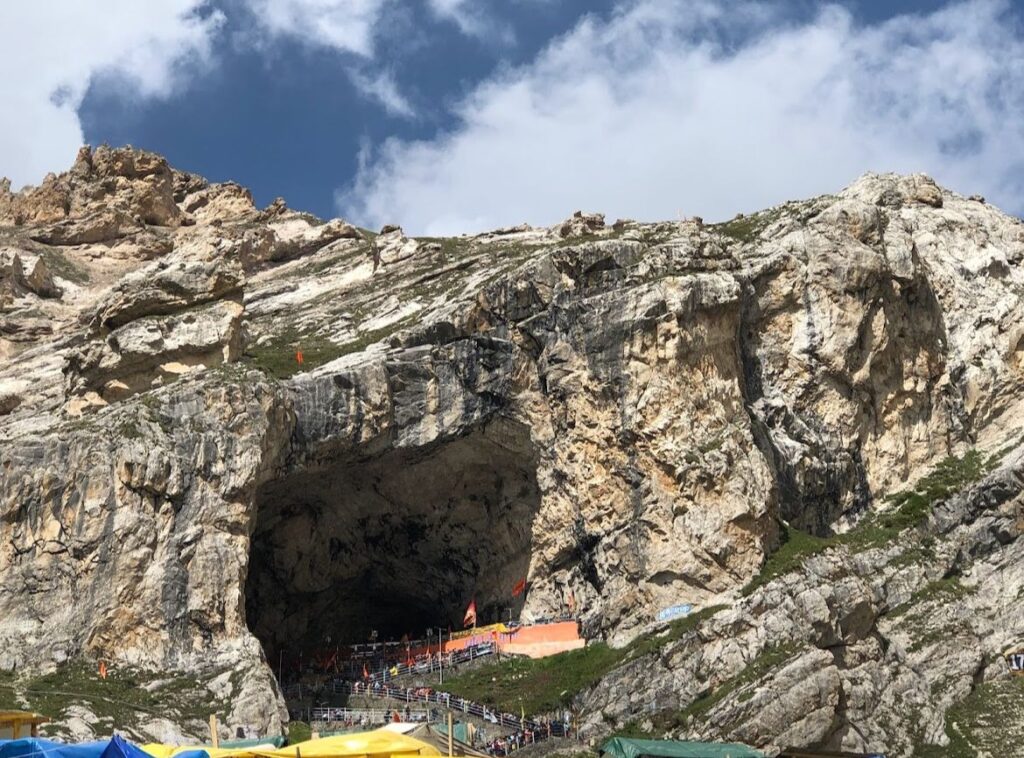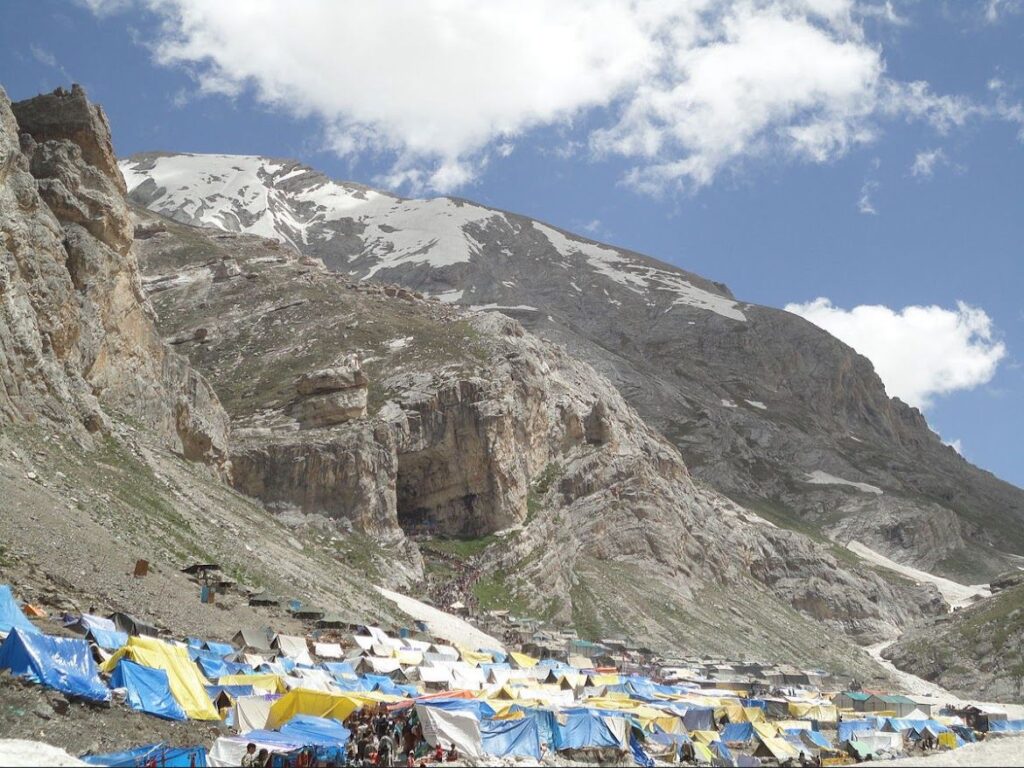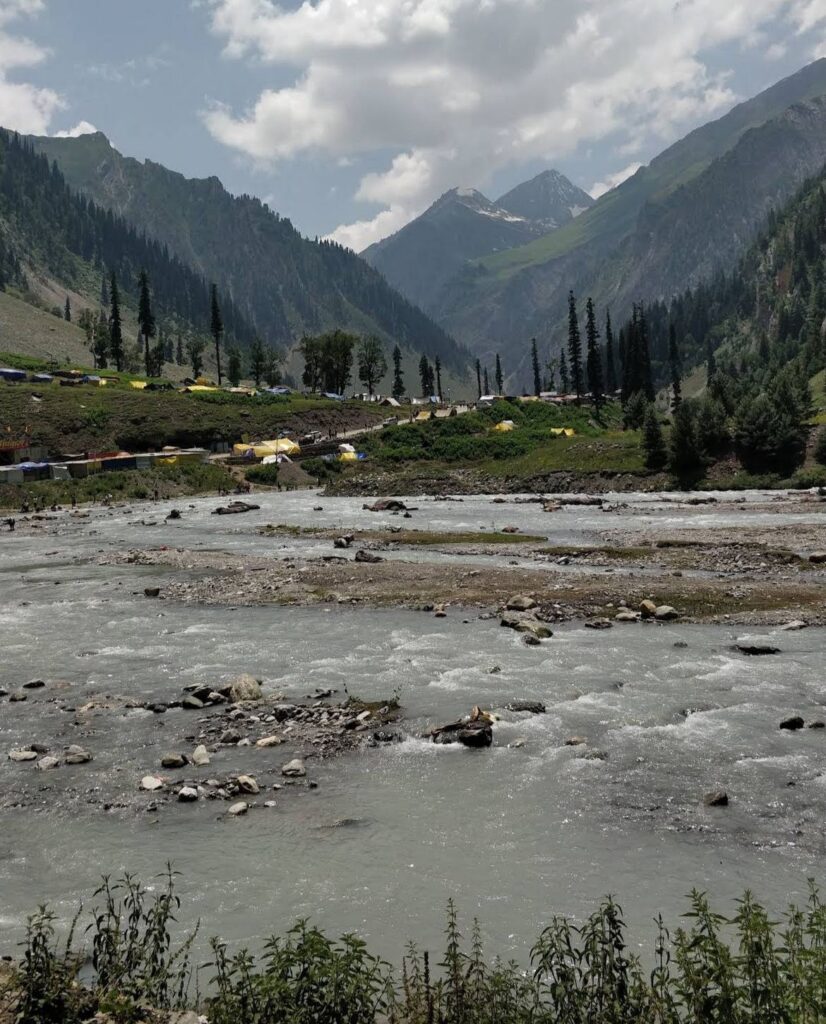The Amarnath Yatra is a significant pilgrimage in India that attracts devotees from across the globe. Nestled amidst the majestic Himalayas in Jammu and Kashmir, the Amarnath cave is believed to be the abode of Lord Shiva. Every year, during the months of July and August, thousands of devotees embark on this spiritual journey to seek the blessings of the ice lingam, a natural formation that symbolizes Lord Shiva’s divine presence. In this comprehensive guide, we’ll delve into the historical, cultural, and spiritual significance of the Amarnath Yatra, along with essential details and tips for a safe and fulfilling pilgrimage.

Historical Significance:
The history of the Amarnath Yatra dates back thousands of years. According to Hindu mythology, it is believed that Lord Shiva chose this cave to reveal the secrets of immortality to his consort, Goddess Parvati. It is said that Lord Shiva left behind his Nandi bull at Pahalgam, the starting point of the pilgrimage, which is why the first glimpse of the bull during the yatra is considered auspicious. The cave remained hidden for centuries until it was rediscovered by a shepherd in the 15th century.
Cultural Significance:
The Amarnath Yatra holds immense cultural significance for Hindus. It is regarded as one of the holiest pilgrimages, and undertaking this arduous journey is believed to cleanse one’s soul and bring them closer to attaining salvation. The yatra also serves as a platform for fostering communal harmony, as people from different faiths come together to participate in the pilgrimage. The government, along with various organizations, ensures the smooth conduct of the yatra, providing facilities and assistance to pilgrims irrespective of their background.
Route and Itinerary:
The traditional route for the Amarnath Yatra starts from Pahalgam, a scenic town located in the Anantnag district of Jammu and Kashmir. The trek to the Amarnath cave covers approximately 46 kilometers and is divided into three main stages: Pahalgam to Chandanwari, Chandanwari to Sheshnag, and Sheshnag to Panchtarni. From Panchtarni, pilgrims embark on a final trek to reach the holy Amarnath cave, situated at an altitude of 3,888 meters. It is crucial to be physically fit and acclimatized before undertaking the yatra, as the terrain can be challenging.

Registration and Permit:
To participate in the Amarnath Yatra, pilgrims need to register themselves with the Shri Amarnath Shrine Board (SASB). The registration process typically starts a few months before the yatra begins. It is important to secure the required permits, which are issued on a first-come, first-served basis, as the number of pilgrims allowed each year is regulated for safety purposes. The SASB website provides detailed information on registration, permits, and the necessary documentation required for the yatra.
PM Modi Emphasizes Humanitarian Aspect of Ukraine War, Pledges India’s Support at G7 Summit”
Safety and Medical Facilities:
Safety is of paramount importance during the Amarnath Yatra. The challenging terrain and unpredictable weather conditions necessitate proper precautions. Pilgrims are advised to carry warm clothing, sturdy footwear, and essential medications. It is also advisable to hire registered guides or pony services to ensure a smooth and secure journey. Medical facilities, including emergency medical camps and qualified doctors, are set up along the route to provide assistance in case of any health issues.
Accommodation and Facilities:
The Amarnath Yatra offers various accommodation options to cater to the needs of the pilgrims. Along the route, there are government-run and privately-owned tent camps, guesthouses, and lodges that provide basic amenities such as beds, blankets, and hot water facilities. It is advisable to make advance bookings for accommodation to avoid any last-minute hassles, as the demand during the yatra period is high.
Additionally, the Shri Amarnath Shrine Board (SASB) also sets up temporary camps at designated locations, including Pahalgam, Chandanwari, Sheshnag, and Panchtarni, where pilgrims can find communal shelters and facilities like toilets, bathing areas, and food stalls. These camps are equipped to accommodate a significant number of pilgrims and provide a safe and comfortable resting place.
Moreover, the SASB and other authorities make extensive efforts to ensure the provision of essential facilities throughout the yatra route. Drinking water facilities, medical aid centers, and emergency services are available at regular intervals to cater to the needs of the pilgrims. The authorities also deploy security personnel to maintain law and order and ensure the safety of the pilgrims throughout the journey.
Weather and Clothing:
The weather during the Amarnath Yatra can be unpredictable, with temperatures ranging from pleasantly cool to extremely cold, especially at higher altitudes. It is important to pack appropriate clothing to stay comfortable and protected from the elements. Layered clothing, including thermals, jackets, woolens, and windproof outerwear, is recommended. Don’t forget to carry gloves, hats, and sturdy boots to keep yourself warm and safeguarded against the rough terrain.

Food and Water:
During the yatra, food stalls and langars (community kitchens) are set up at various points along the route. Pilgrims can find a variety of vegetarian meals, snacks, and beverages to replenish their energy. It is advisable to carry some dry fruits, energy bars, and packaged snacks for emergencies or if you have specific dietary requirements.
Ensuring safe drinking water is crucial during the yatra. While there are water points available, it is recommended to carry your own water bottle and use water purification tablets or filters to avoid any waterborne illnesses.
Overcoming Adversity: Nivedita Chaudhary’s Inspiring Journey to Success
Dos and Don’ts:
- Do carry your identification documents, permits, and registration details at all times.
- Do follow the instructions of the authorities and volunteers during the yatra.
- Do respect the environment and keep the surroundings clean by not littering.
- Do maintain discipline and patience during the yatra, as the crowds can be overwhelming.
- Don’t undertake the yatra if you have any health conditions that may be aggravated by high altitudes or strenuous physical activity.
- Don’t attempt shortcuts or deviate from the designated path, as it may lead to accidents or getting lost.
- Don’t disregard safety precautions and guidelines provided by the authorities.
- Don’t consume alcohol or any intoxicating substances during the yatra, as it is a sacred pilgrimage.
The Amarnath Yatra is a remarkable spiritual journey that offers devotees a chance to connect with their faith amidst the awe-inspiring beauty of the Himalayas. The historical and cultural significance of the yatra, coupled with the challenging yet fulfilling trek, makes it a transformative experience for pilgrims. By following the necessary precautions, registering in advance, and being well-prepared, you can embark on this sacred journey with peace of mind. May your Amarnath Yatra be filled with divine blessings and everlasting memories.
Salman Khan 19 Floor Hotel: Salman Khan’s Family to Build Luxury Hotel on Prime Sea-Facing Plot in Mumbai


[…] The Ultimate Guide to Amarnath Yatra: A Spiritual Journey Amidst the Himalayas […]